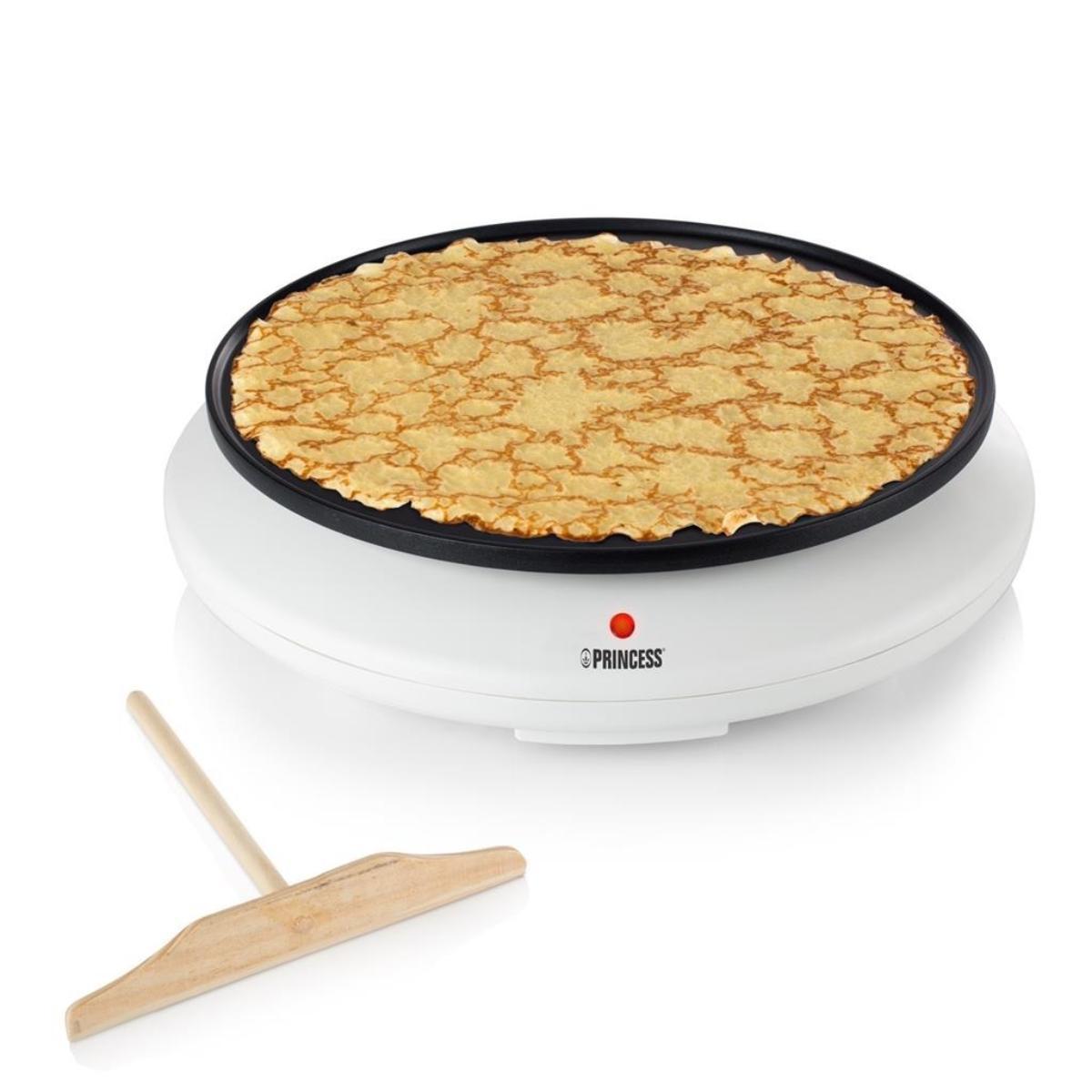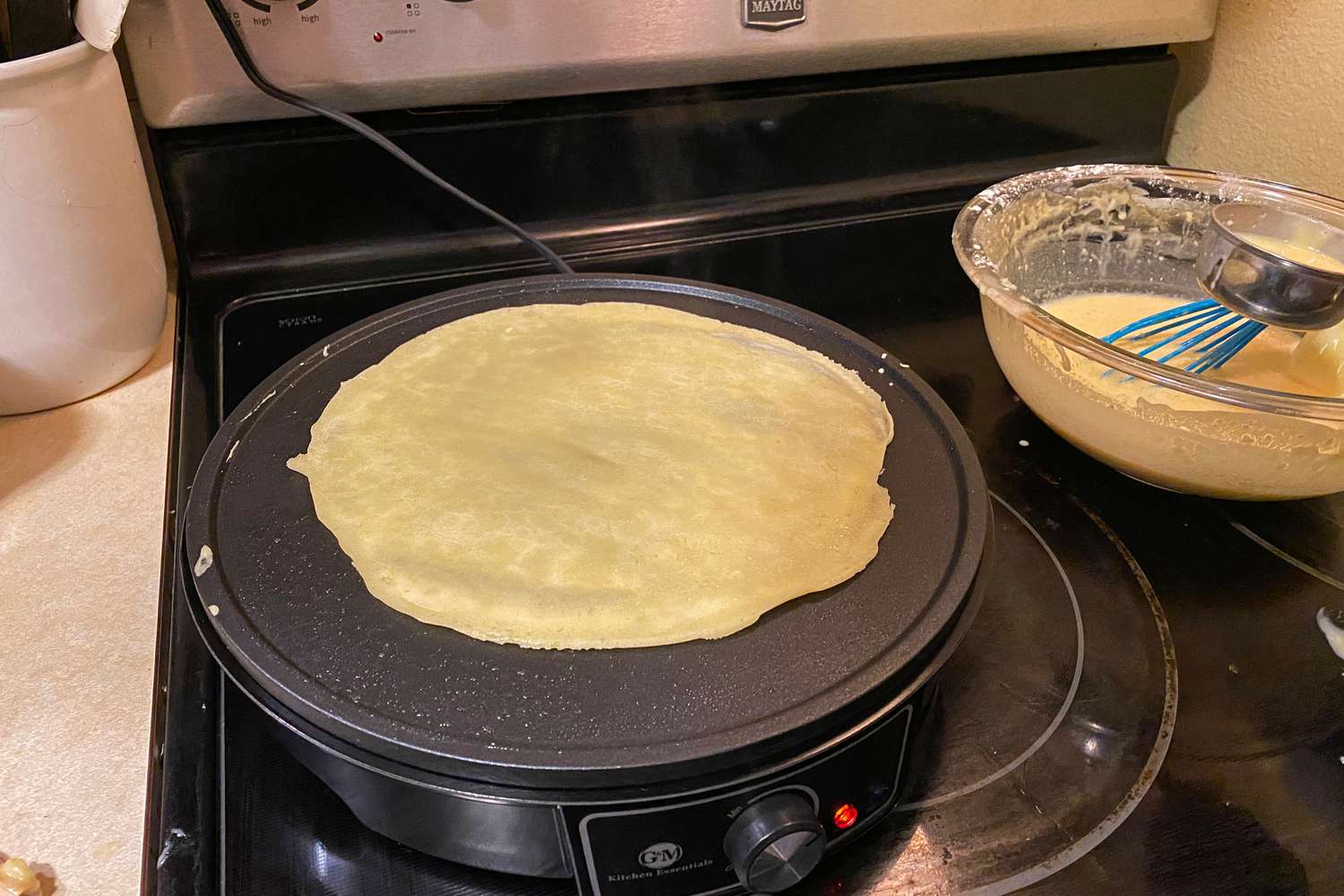There’s nothing quite like the magic of pouring a ladle of thin, delicate batter onto a hot surface and watching it transform into a golden, delicious crepe. But there’s also nothing quite like the heart-sinking feeling of your spatula getting stuck, tearing that perfect creation into a sad, scrambled mess. If you’ve ever battled with a stubborn crepe, you’re in the right place. Learning How To Prevent Crepe Sticking is the single most important skill that separates frustrating breakfasts from flawless, restaurant-quality results. I’m here to guide you, not just as an expert, but as a fellow crepe lover who has flipped thousands of these delicate delights. Let’s turn your kitchen into a bona fide creperie.
Why Do My Crepes Keep Sticking? Unpacking the Science
Before we jump into the solutions, let’s play detective. Understanding why your crepes are sticking is the first step to conquering the problem for good. It usually boils down to a culinary trio of trouble: heat, batter, and the cooking surface.
The most common culprit is improper heat management. If your pan is too cold, the batter seeps into the microscopic pores of the pan before it can cook, creating a glue-like bond. If it’s screaming hot, the batter can burn and fuse to the surface instantly, especially if there are tiny bits of burnt oil or butter from previous batches.
The Temperature Tango: Is Your Pan Too Hot or Too Cold?
Think of it like a classic Goldilocks situation: your crepe maker or pan needs to be just right. An inconsistent or incorrect temperature is the number one reason for sticking. A well-preheated, medium-hot surface allows the liquid batter to hit the heat and immediately form a cooked, solid layer on the bottom, which then releases itself from the pan.
Your Batter’s Role in the Sticky Situation
Batter consistency is a bigger player than most people think. A batter that’s too thick won’t spread easily and its weight can make it prone to sticking. On the other hand, a batter that’s too thin might lack the structure to hold together. Furthermore, too much sugar in your recipe can caramelize and burn quickly, essentially welding your crepe to the pan. For a foolproof starting point, check out our recipe for the perfect classic crepe batter.
The Pan’s Surface: Are You Working with a Friend or Foe?
The surface you cook on is your partner in this culinary dance. A scratched, old non-stick pan has lost its protective coating, creating a perfect landscape for batter to get trapped. A beautiful cast iron or carbon steel pan, if not properly seasoned, is just as bad. Seasoning creates a natural, non-stick layer through a process called polymerization, where oil bakes into the pan’s surface. Without it, you’re just cooking on porous metal.
Your Masterclass on How to Prevent Crepe Sticking
Alright, enough with the problems—let’s get to the solutions. Follow these steps, and you’ll be on the fast track to crepe-flipping glory.
Step 1: Season and Prepare Your Surface Like a Pro
This is non-negotiable for cast iron and carbon steel pans, and a good practice even for non-stick surfaces.
- Clean it Well: Start with a clean, dry pan.
- Add Oil: Pour a teaspoon of a high-smoke-point oil (like grapeseed, canola, or sunflower oil) into the pan.
- Heat it Up: Place the pan over medium-high heat.
- Wipe and Wait: Use a paper towel to wipe the oil all over the interior surface, leaving only a micro-thin layer. Continue heating until the oil just begins to smoke.
- Cool Down: Remove the pan from the heat and let it cool completely. Wipe out any excess oil.
You’ve just created a slick, glassy, and naturally non-stick surface. For high-quality non-stick electric models, simply ensuring the surface is perfectly clean and free of any old residue is enough.
Step 2: The Art of Greasing (Remember, Less is More!)
You don’t need to flood the pan with fat. A little goes a long way.
- Butter is Best for Flavor: Use a small knob of clarified butter (ghee) or unsalted butter. Clarified butter is ideal because the milk solids have been removed, so it won’t burn as quickly.
- How to Apply: Melt the butter and use a paper towel or a silicone brush to wipe a very thin, even layer across the entire surface right before you pour your first crepe. You should see a gentle shimmer, not a pool of oil.
- Re-apply as Needed: You may need to re-apply a tiny amount of butter every 2-3 crepes.
As our friend and renowned pastry expert, Chef Elena Petrova, always says, “The perfect crepe should glide on the pan like a figure skater on ice. If it’s sticking, your ice—the pan’s surface—needs resurfacing with proper heat and a whisper of fat.”
Step 3: Nailing the Perfect Cooking Temperature
This takes a little practice, but you’ll get the hang of it.
- Preheat Patiently: Preheat your electric crepe maker or pan over medium heat for at least 3-5 minutes. The surface needs to be uniformly hot.
- The Water Test: This is the oldest trick in the book. Flick a few drops of water onto the surface. If they sizzle away instantly, it’s too hot. If they just sit there and steam, it’s too cold. If they bead up and dance across the surface before evaporating, your pan is at the perfect temperature.
- Maintain the Heat: Once you find the sweet spot on your stove, keep the dial there. Electric crepe makers with thermostatic controls make this part incredibly easy.
Pro Tips Straight from the Crepe Maker Depot Kitchen
After making more crepes than we can count, we’ve gathered a few extra tricks that can make all the difference.
- Let Your Batter Rest: After mixing, let your batter rest in the refrigerator for at least 30 minutes, or even overnight. This allows the flour to fully hydrate and the gluten to relax, resulting in a more tender crepe that’s less likely to tear and stick.
- The First Crepe is for the Chef: Don’t be discouraged if the first crepe is a failure. It’s often called the “sacrificial crepe” for a reason. Its job is to finish seasoning the pan and help you dial in the temperature.
- Use the Right Tools: A long, thin offset spatula or a proper wooden crepe turner is your best friend. They are designed to get under the delicate edge of the crepe without tearing it. You can find our curated selection of crepe making accessories here.
- Don’t Flip Too Early: Be patient! The crepe will tell you when it’s ready to be flipped. The edges will start to dry out and curl up slightly, and the surface will look set and no longer shiny.
What if a Crepe Sticks Anyway? The Rescue Mission
Even the pros have a crepe stick now and then. Don’t panic! If a crepe starts to tear, don’t force it. Gently try to lift it from a different angle. If it’s a total loss, just scrape it out with a wooden or silicone spatula (never metal on a non-stick surface!), give the pan a quick wipe with an oiled paper towel, and start again. Every mistake is a lesson.
Frequently Asked Questions
Why are my crepes sticking to my non-stick pan?
Even on a non-stick pan, crepes can stick if the temperature is too low, the pan has invisible residue, or it has been scratched. Always ensure your pan is clean, properly preheated to medium heat, and lightly greased with butter or oil before the first crepe.
Do I need to put oil on a crepe maker?
Yes, it’s highly recommended. Even the best non-stick crepe makers benefit from a very thin layer of oil or butter applied with a paper towel before the first use. This ensures a flawless release and helps with browning.
Can I use cooking spray to prevent crepe sticking?
It’s best to avoid aerosol cooking sprays. They contain emulsifiers and propellants that can build up on your pan’s surface over time, creating a gummy residue that is hard to remove and will eventually cause more sticking.
How do I clean my crepe maker to prevent future sticking?
To prevent buildup, clean your crepe maker after it has cooled down. Wipe it with a soft, damp cloth. For stubborn bits, use a little warm, soapy water and a non-abrasive sponge, then rinse and dry thoroughly. Never use steel wool or harsh cleaners.
What is the best pan for making crepes that don’t stick?
A dedicated electric crepe maker with a high-quality non-stick surface offers the most consistent heat and reliable results. Alternatively, a well-seasoned carbon steel or cast iron crepe pan provides an excellent, naturally non-stick surface.
Your Journey to Perfect Crepes Starts Now
Mastering the art of how to prevent crepe sticking is a true game-changer. It’s not about having a magical pan; it’s about understanding the simple dance between your surface, your heat, and your batter. By seasoning your pan, managing the temperature, and using just a touch of fat, you build a foundation for success. You transform a potentially frustrating task into a rewarding and delicious ritual. Now, go forth and flip with confidence! We’d love to hear about your crepe-making adventures and see your perfect creations in the comments below.
